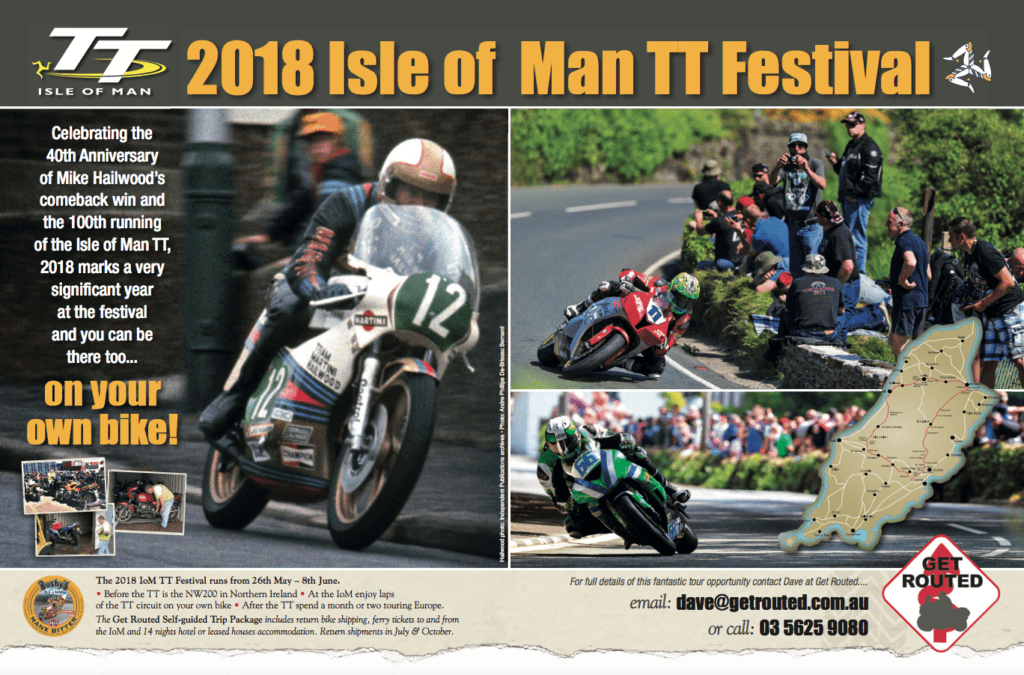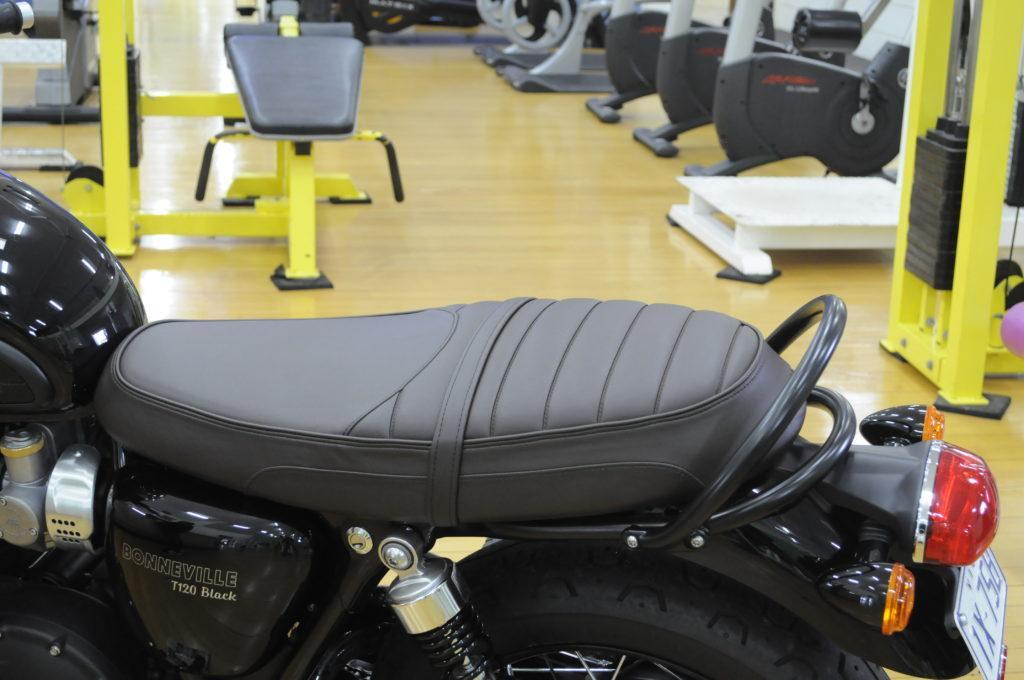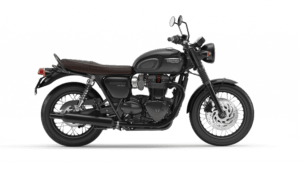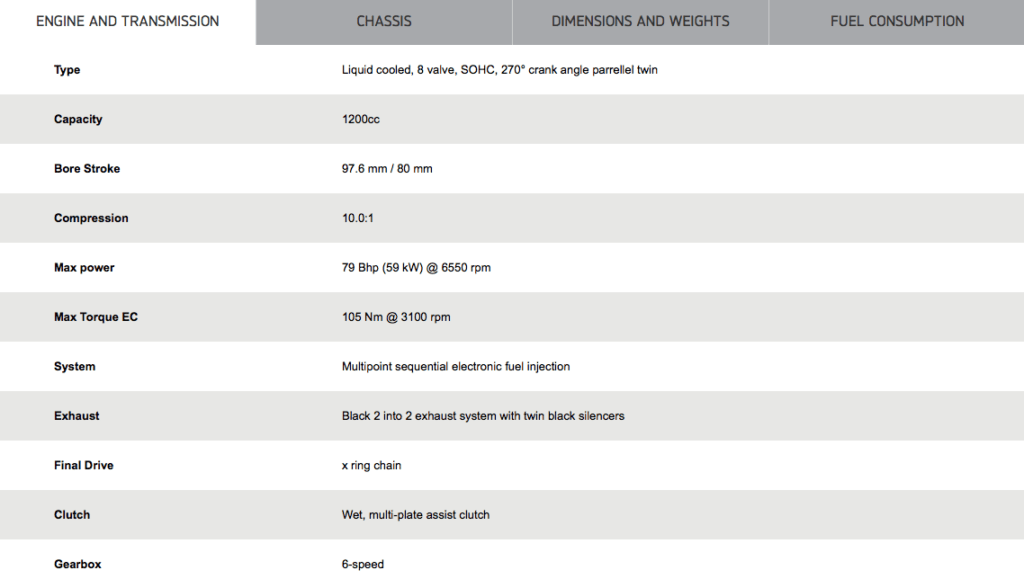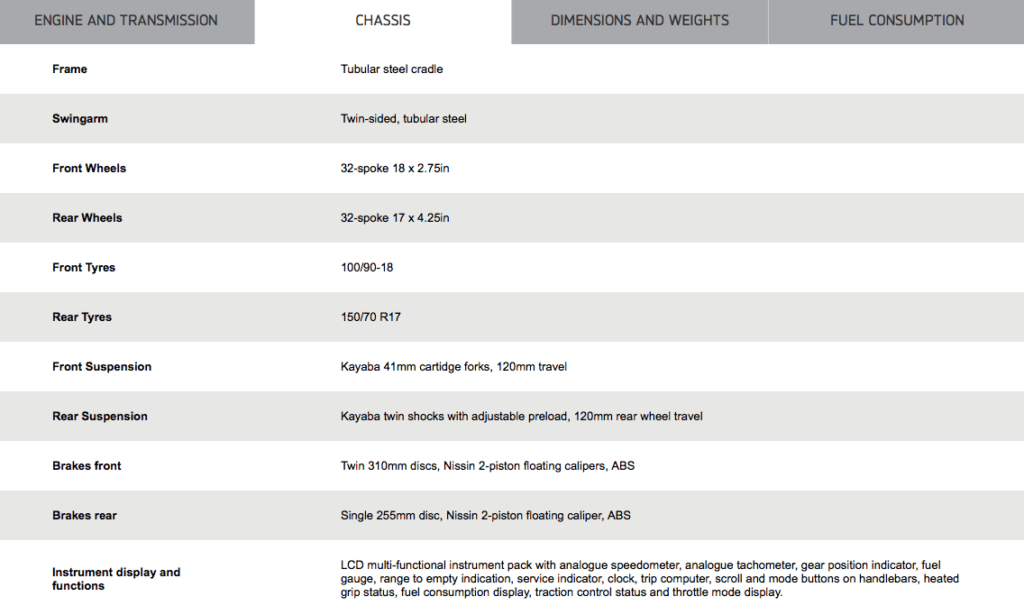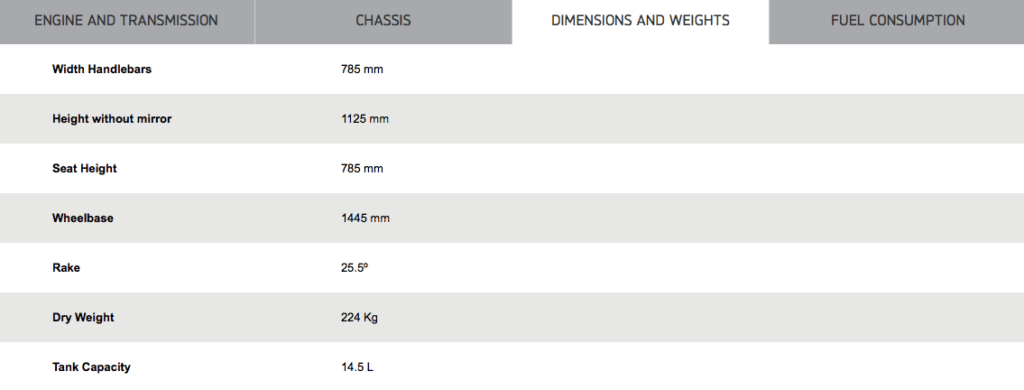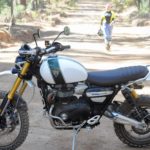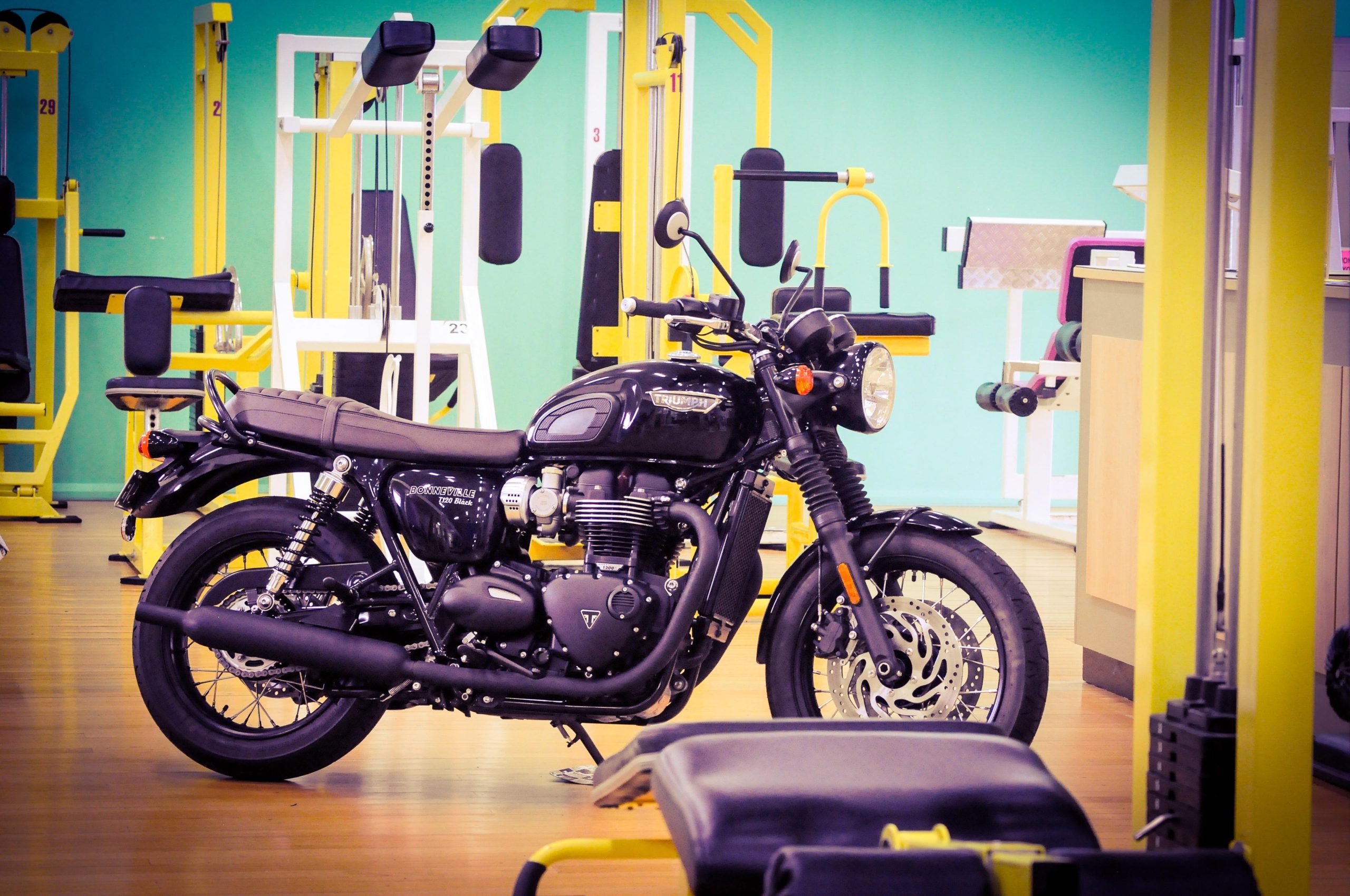

THERE was a time when Triumph motorcycles were really fast.
After all, the Bonneville model line was named after the American Bonneville salt flats at a time when Triumphs triumphed in no uncertain terms.
Back in those days, the British made the fastest bikes in the world. In 1956, American Johnny Allen’s ‘Texas Ceegar’ streamliner ran a Triumph Tiger 650cc motor and set a land speed record of 214.4 miles per hour.
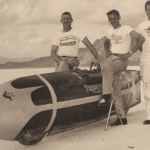
The three-cylinder Triumph Trident (and its twin sister BSA Rocket 3) wore the “fastest production bike in the world” crown for almost a decade before being knocked off by Kawasaki’s Z1 900 in 1973.
But let’s be frank. That was a very long time ago. These days, when most of us hear the word ‘Bonneville’ we think of Levis, Bolle sunnies, a pair of Doc Martens, an open face helmet, a cappuccino at the Dome, and a modern Triumph with lots of cool factor but not much fast factor.
I am sure Triumph never intended its T120 Bonneville to be thought of as a sports bike, and it’s not. It’s not going to blow away Fireblades at the lights, and there’s no need for Kawasaki to look over its shoulder for fear of a Bonnie threatening its H2R’s fastest-bike-in-the-world crown.
As has been the case for years, the Bonneville is a retro street cruiser, designed for the cafe strip and an occasional blast on the highway.
Yep, it’s still a James Dean of a motorcycle.
But something strange has happened in Hinckley.
Like the skinny kid tired of having sand kicked in his face, the Bonnie has hit the gym, pumped itself up, and gone all buff.
Sure, it’s still James Dean. Still cool, still pretty to look at, still fun, still an all-rounder.
But, with a 1200cc motor tuned to deliver some proper midrange punch, the big Bonnie is now James Dean … with a baseball bat.
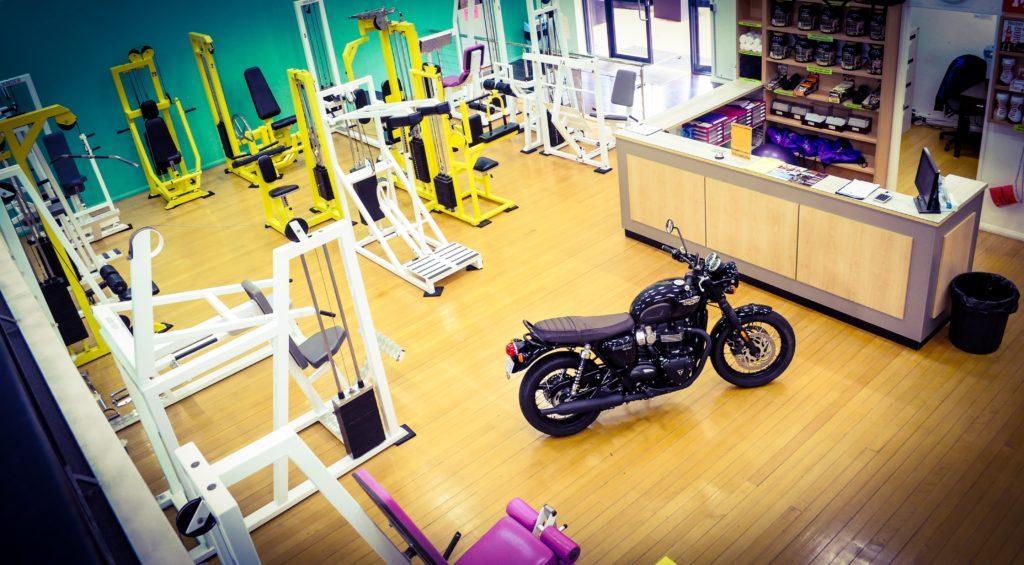
How does she go?
She goes a lot quicker than I expected.
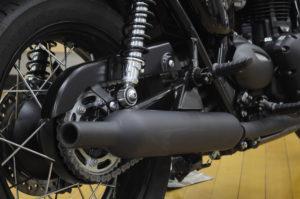
When I opened up this latest and biggest-ever Bonnie on Forrest Highway, I discovered the modern 1200cc incarnation of British motorcycling history has some serious muscle.
And I was even more surprised to find that it’s ‘hang-on’ moment is not way down low in the rev range like the 900cc Street Scrambler but up in the mid-range. Where the 900cc Scrambler’s excitement zone is pretty much all over by 4000rpm, the big Bonnie is just getting started. And when the T120 finds its mojo, it feels like an old-school muscle bike, complete with old-school muscle.
Part of the performance surprise stems from the fact that it doesn’t sound like a muscle bike. It sounds more like a 1974 Honda TL125.
OK, I exaggerate.
You can hear the ‘bigness’ of this Triumph motor, but if you believe mufflers are meant to muffle, then these mufflers are great mufflers indeed. Me? I’d have them hanging from the rafters in a heartbeat, replaced by something with a bit more aural presence.
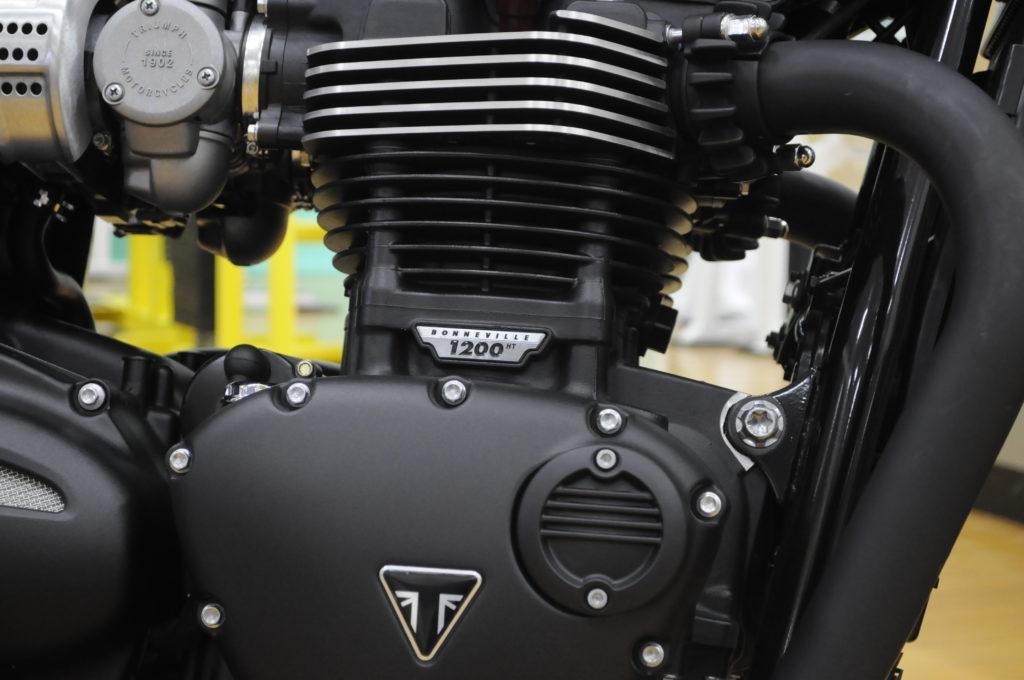
How does she stop?
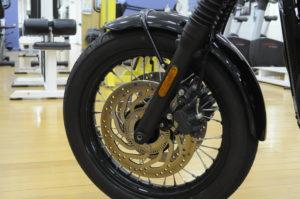
With twin 310mm discs up front, a single 255mm down back and ABS technology hiding somewhere in the central techno-gizzards, she stops brilliantly. I’ve said it before, but I’ll say it again: Traction control and ABS have transformed bike safety and bike braking technique. You can be way more aggressive than back in the day and, as you get used to it, your braking behaviour and acceleration behaviour gets more aggressive. It’s fun with a capital A, B and S.
I know that some folks will say the 2x310mm and 1x255mm stats on the specification sheet look a bit under-done for a bike this big, but that’s not how it feels on the road.
Great stuff.

How does she handle?
Engine performance aside, the other great surprise from the T120 is its size — or at least its apparent size.
It feels like a small bike. It really does. You can feel the engine width between your ankles but, apart from that, you could be riding a 500 single. Or a 650 twin, I guess. And around the streets, that’s how you ride it. It’s remarkably flickable and, with those brakes encouraging you to go deep into the corners, you quickly find yourself going quickly.
What about the highway?
This is a good highway bike. It’s not great — the sitting position is rather upright and there’s no wind protection to speak of, so you do cop the wind — but the motor is highway-friendly, the seat is comfortable in an old-fashioned big-seat kind of way, and the upright sitting position feels natural. You wouldn’t want to try high speed for a long time, but at legal speeds (or a tad below) you could cover some good distance in a day. Albany, Geraldton, Kalgoorlie; no worries at all. And further afield would be quite okay, provided you’re not in a hurry.
I was surprised to learn the T120 had a six-speed box. Sixth is an overdrive for sure. I found myself at highway speed in heavy rain with a lot of car traffic around me, and I didn’t go near top gear. At anything under 100kmh, I actually preferred fourth where I had instant access to overtaking performance.
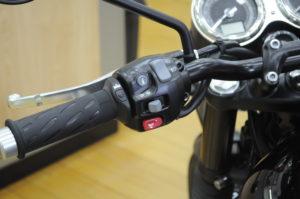
Is it old-fashioned, or just fashioned old?
Just like the Street Scrambler we rode back in July, the T120 is not so much old fashioned as fashioned old; and only in the styling department. Or, to quote an English chap I know: “It looks like a proper bike, dunnit?”
Indeed it dun. Snuggled in behind the heads are a couple of things that look like carburettors. But they’re not. The engine fins are generous, making the motor look like it’s air-cooled. But it’s not. The gauges look old-school, but apart from speed and revs they’ll tell you the time, the temperature, how far before you’ll run out of juice, what gear you’re in, what mode you’re in (that’s just ‘rain’ and ‘dry’ modes, by the way, no ‘sport’ mode), and whether the heated grips are hot or just warm.
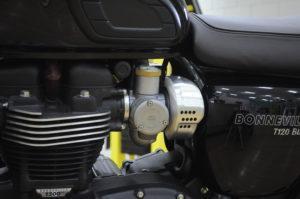
Heated grips, you ask? You bet. And they work a treat. A little touch of extravagant modernity, and why not?
What do we really think?
If you want a bike that can be sporty some of the time, a highway bike some of the time, a city bike some of the time, and really cool all the time — and if you want a bike that will carry a pillion in comfort — you can start your shopping right here.
It’s not as easy to ride as the Street Scrambler. The T120 needs more revs off the mark and, given those revs and the extra cubes, it launches with a greater sense of urgency. I thought that was great fun, but riders with fewer miles under their Sidis might get spooked. I also found the ride-by-wire throttle just a fraction touchy at the tiniest openings. Nothing scary, but something to watch until you get used to it.
It’s a muscular town bike for grown-ups — and for their pillions — with enough engine to take on the highway and keep experienced riders entertained.
The pillion report
By The Missus
This is a comfortable bike. Maybe even a very comfortable bike. When we set out for our pillion test, I planned to concentrate on the usual pillion points — do I get a sore bum, do I have to stretch to reach the rider, do I have enough room, is there anything to hang onto, can I see the road ahead?
But once I found the rear grab rail and started watching the scenery, I forgot the other stuff.
The grab rail was more useful than I expected. At first glance I thought well, hey, it’s behind me. What’s the good of that? Unless you’re exceptionally flexible in the elbow department, that seemed less than useful. But useful it was. I didn’t grab it with both hands, but alternated between left and right. That enabled me to relax, I didn’t have to be hanging onto Peter all the time, and it worked a treat.
For the record, the seat had ample front-to-rear dimensions, padding was generous, width was good, and footpeg placement was right for me.
Yes, I could do some miles on the back of a big Bonneville.
TRIUMPH BONNEVILLE T120 BLACK
SPECIFICATIONS
Also see:
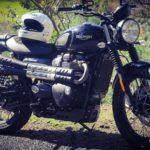 We ride the Triumph Street Scrambler
We ride the Triumph Street Scrambler
